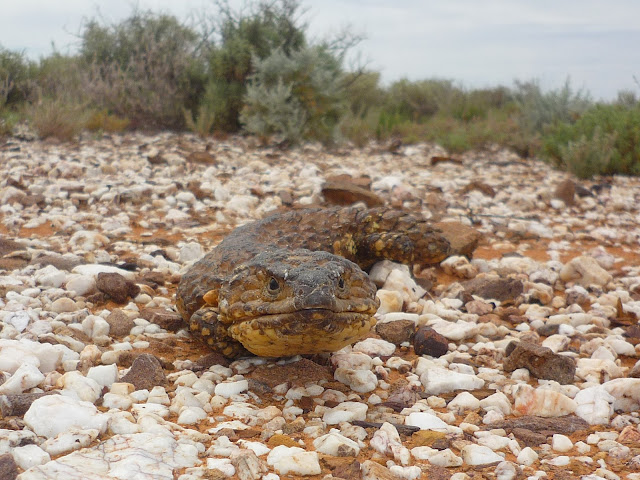The
following is a photo-essay of some critters I encountered during the
month I spent at Fowler's Gap Research Station in the Australian outback, doing work on small mammal abundance in response to grazing and
rainfall. The posting was part of my Masters of Conservation Biology
programme back in... ummmm... the second half of 2010.
Lucky for us the area had received a lot of rain - breaking a drought that had lasted almost 20 years. A lot of the animals we trapped would be a lot harder to find in leaner times.
The
pictures are recently claimed from a laptop I was using at the time, So
I thought I would give them a fresh airing. Out of respect for you,
gentle viewer, I have omitted the countless, tedious images of plants
and plant-parts.
Myself and two other Master's students were trying to approximate mammal and (informally) reptile abundances using pitfall traps. After we had identified, measured and weighed any animals unlucky enough to fall into the traps they were released. All identifications were made by we three students and may be suspect.
Some reptiles:
 |
| Tympanocryptus lineata |
 |
| Diplodactylus byrnei (?) gecko |
 |
| Unidentified gecko |
The Shingleback below didn't fall into the trap, they were just sunning themselves nearby:
 |
| Tiliqua rugosa - Shingleback |
 |
| T. rugosa |
 |
| T. rugosa. In life the tongue is bright blue. |
We had an unexpected Goanna capture, a real treasure.

Varanus spp. Maybe V. gouldii
We trapped invertebrates too. Hard to tell without a scale, but the two below were rather large
 |
| Centipedes |
What we were hoping to find were native Australian rodents and "marsupial mice" called Dunnarts. These are short lived insectivores. The females have tiny, backwards-facing pouches. The pictures are all of Dunnarts. We did catch native rodents but they didn't photograph well.
 |
| Dunnart. Sminthopsis sp. Not dead - In a torpor |
 |
| Sminthopsis crassicaudata. They have many peg-like fangs - And know how to use them. |
 |
| Sminthopsis macrorura |
We also caught plenty of field mice. The rainfall had favoured them too. They were at plague proportions. Some mornings a single trap would be teeming with mice. The picture below is far from the record which was about 12!
 |
| There is a dunnart in here too, from 9-10 O'Clock. The mouse at 1-2 O'Clock was savaged by companions. |
Here is a random frog, photographed at night: These frogs were often heard, but seen only once. Amazing that anurans could survive in the outback (daytime high in summer, in exposed locations = 40°C +), but they favour areas such as the water tanks and tree hollows.
 |
| Random frog. |
A kangaroo story:
Hey, what would an outback experience be without a kangaroo story. We helped with a kangaroo study conducted at the station. The study involved capturing female kangaroos with joeys, by using tranquiliser darts.
It took a while before the shooter got this right. In one of the first attempts, the dart hit the female in her pouch, went through the skin and drugged the joey! As she ran off, the joey came out of her pouch. The mother fled, never to return, so we collected up the young kangaroo, took them back to the station for the night.
At first the team had to process the other successful captures and my job was to cuddle the joey. I held them in my arms for over an hour. An amazing experience.
Later we put them into a backpack, hung them on a chair and fed them every few hours on a special milk formula. The next day we went to the nearby town of Broken Hill and dropped the joey off with an organisation dedicated to their care.
 |
| Nate feeding the joey |
Final image of an amazing sunset.


Salwa: Corin did the mice fight in the traps? Did u see any injuries?
ReplyDeleteHi Salwa, Yes, the mice did fight occasionally. In the birds eye view of the pitfall trap full of mice above, there is a dead one that had wounds. It is hard to say whether they were post-mortem. In all the cases we were never able to determine the cause of death i.e. fighting or shock or exposure, but sometimes there was pretty graphic damage to a mouse corpse. One was even half eaten. And it was always the field mice, never any marsupial or native rodent casualties.
ReplyDeleteWhat do you know about mice fighting? Is it a territorial things between males in close proximity?